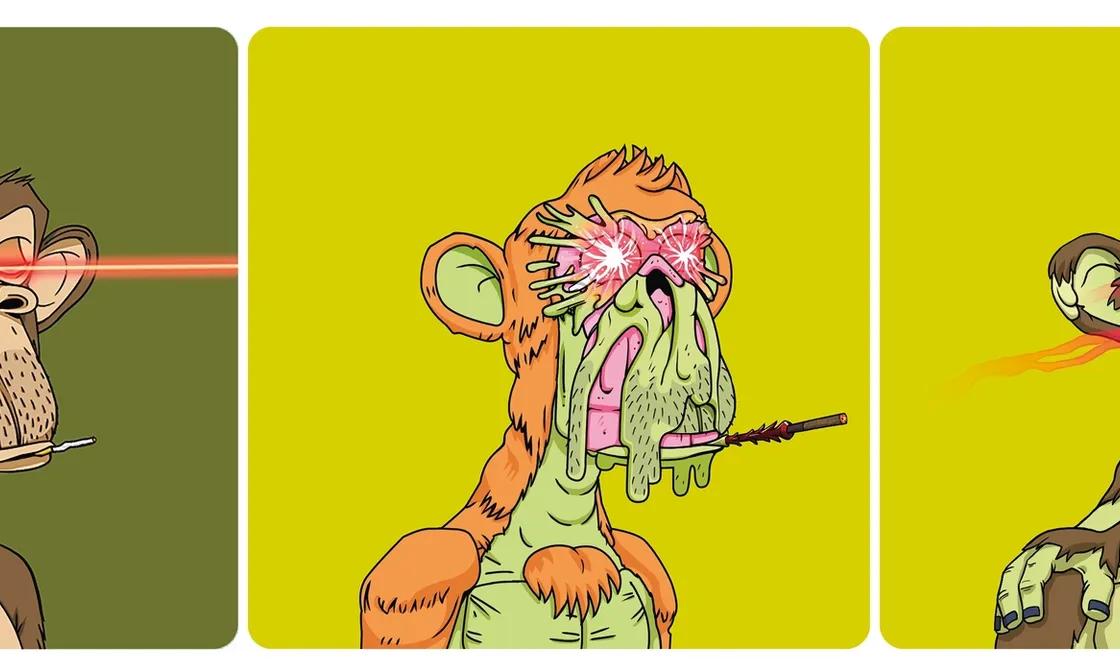A triptych of NFTs from the Bored Ape Yacht Club (BAYC)—one of the most popular NFT projects online—sold for £982,500 (with fees) last week at Christie's
Courtesy of Christie's
Sceptics said (and are still saying) it is a bubble.
But NFT sales have so far hit around $3.5bn in the first three quarters of this year, according to the Hiscox Online Art Trade Report 2021, produced in partnership with ArtTactic. The report found that total online art sales reached $6.8bn in the first half of 2021—and could hit $13.5bn by the end of this year.
While the NFT market might have faltered in April, late summer saw a surge—in August, the report estimates $1.8bn in NFT sales which makes the previous high, in March when Beeple’s Everydays—The First 5000 Days sold for $356m—pale in significance.
But, this is a hugely volatile market and in September, NFT sales dropped by 69%.
Hiscox and ArtTactic identify a discernible shift in buying focus—the first NFT boom earlier this year tended to be focused on works by single artists (ahem, Beeple) but now the appetite is for “code-generated art” by collectives such as such as Crypto Punks and Bored Apes Yacht Club (BAYC). “Although the art itself might be perceived by critics as trivial, the combination of uniqueness, ownership, gamification, and storytelling is fuelling sales and speculation among a new generation of collectors and investors,” the report says. It adds: “Art and NFTs are here to stay”.
The swift adoption of NFTs by the big traditional auction houses (Christie’s, Sotheby’s, and Phillips) has been mutually beneficial. Indeed, four of the top ten NFT prices to date have been achieved through these traditional auction houses, showing that even in this most progressive of markets, old-school credibility still counts for a lot.
Online art platforms are also piling in: 14% said they already offer NFTs through their site, with another 38% planning to do so soon. Artnet and 1stdibs both announced in August the launch of proprietary NFT platforms—1stdibs’s is based on an auction model, with semi-monthly sales of NFTs.
What have quickly sprung up this year are physical NFT galleries, dedicated to crypto art. But, the report cautions, “as more traditional galleries move into NFTs, it is questionable whether more physical NFT galleries will open, or whether the NFT and traditional art world will gradually merge.”
We use cookies to personalise content and ads, to provide social media features and to analyse our traffic. We also share information about your use of our site with our social media, advertising and analytics partners who may combine it with other information that you’ve provided to them or that they’ve collected from your use of their services. Read our Cookie Policy for more information.

